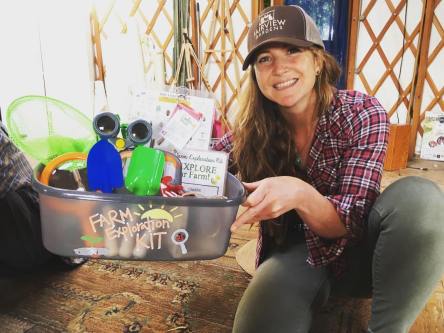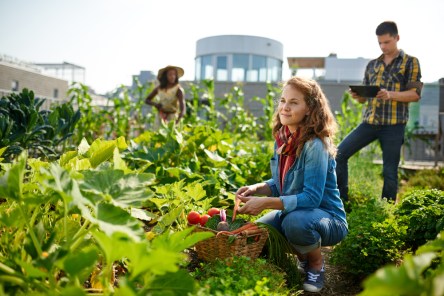Over a hundred years ago, a farmer stuck his shovel in the dirt on a small plot of land in Goleta, California. The site has never been the same. The site is now The Center for Urban Agriculture at Fairview Gardens, a non-profit educational facility and working organic farm. The organization aims to nurture the human spirit through interactive public programs and community services. Two years ago, Angela Miller-Bevan stepped away from her career in corporate advertising and marketing to join the Fairview Gardens team. She began as a volunteer, then worked as an assistant to the Development Director before accepting the position. “I came to promote the mission: to educate everyone—from birth to the end of your life—to know how important it is to eat the right foods and know where your food comes from. And how to eat food we can actually grow right now because we are in a drought. It’s about sustainable community and keeping something alive that has been in our community for so long,” says Miller-Bevan. For decades, Fairview Gardens has served the community through public programs including the Teen Permaculture Apprenticeship and the new Sprouts program. Yardi supports the Apprenticeship Program immersion experience that ranges from six to ten months. The program equips young adults with the skill needed to own and manage their own farms and farm programs. Participants explore permaculture ethics, the slow food and fiber movements, organic agriculture, watersheds, alternative economics, farmworkers’ rights, herbalism, and living soils. Apprentices also learn natural dyeing, making herbal medicines, and harvesting wild edibles. “Most people don’t know that the average age of farmers is 72. It’s sad,” observes Miller-Bevan. “You can’t go to a computer and have a computer grow your food. It’s impressive to see young adults...
Community Gardens
Investment Insights
As a gardener, I took personal interest in the community gardens popping up throughout the US. I expected to find plenty of resources on the practicality and returns on such projects. Unfortunately, I had no such luck. What I’ve found, though, may help you determine if a community garden is a worthwhile addition to your multifamily property. We can begin with the question that is likely in the forefront of your mind, “What will it cost me?” That answer depends on several factors. Primarily, the costs of the garden depends on its size and the materials used. Rot- and pest- resistant cedar wood will cost more than pressure treated wood, for example. When using local, recycled wood, you may just pay for transportation. Then your costs will vary based upon how the apartment garden is established. In most cases, the site is responsible for the installation. The site furnishes irrigation, a few tools, and perhaps the first season of plants (since an active garden is an easier sell than bare earth). With greater involvement, the costs increase to accommodate maintenance of the site, perhaps a part-time gardener or additional time on the clock for maintenance techs. The potential returns also depend on whether or not residents pay a fee for using plots, or whether they are offered without charge. With those factors in mind, it is impossible to pinpoint the exact costs and returns for a community garden. But the following information may give you a ballpark idea of a garden’s value. “We’ve had our community garden for several years now,” says Vanessa Jackson, Leasing Consultant at Greystone Farms Apartments in Columbus, GA. “Honestly, most people don’t come in asking about it. But once we drive them around the property and we point it...


